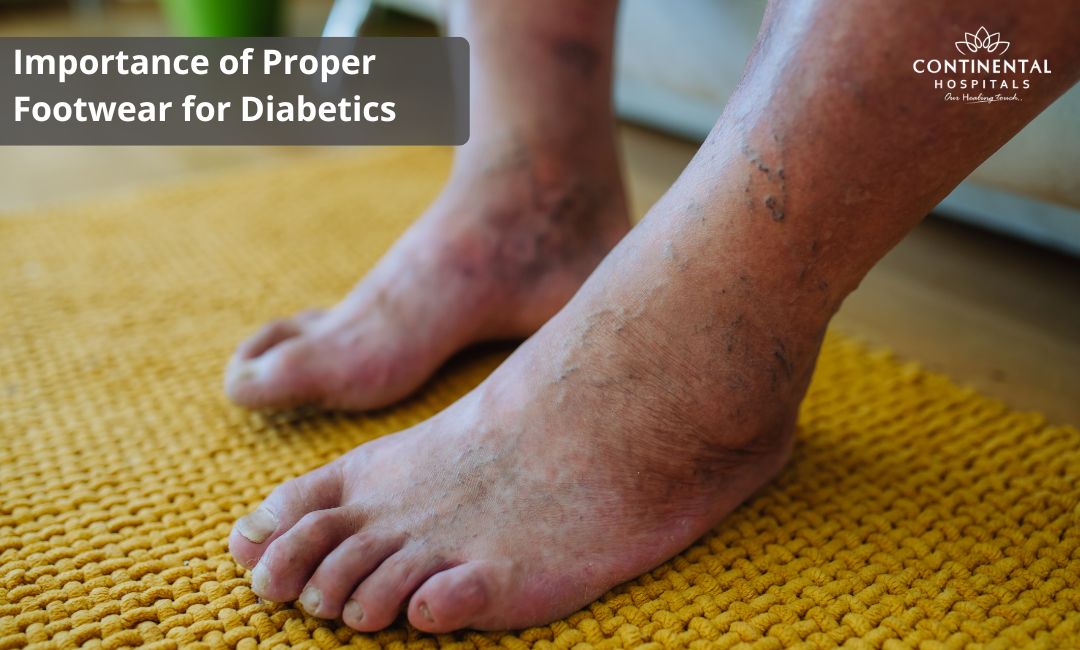Living with diabetes requires constant vigilance over many aspects of health, including foot care. Among the various precautions and practices diabetics must adopt, the significance of proper footwear cannot be overstated. Foot problems are common among individuals with diabetes and can lead to severe complications if not managed effectively. In this comprehensive guide, we delve into the importance of proper footwear for diabetics, exploring its role in preventing complications and promoting overall foot health.
Understanding Diabetic Foot Problems:
Diabetes is associated with a range of foot complications, primarily due to nerve damage (neuropathy) and poor blood circulation (peripheral arterial disease). Neuropathy can cause loss of sensation in the feet, making it difficult to detect injuries or discomfort. Peripheral arterial disease reduces blood flow to the feet, impairing the body's ability to heal wounds. As a result, even minor injuries can escalate into serious infections or ulcers if left untreated.
Role of Proper Footwear:
Prevention of Injuries: Diabetic shoes are designed to provide ample protection for the feet, reducing the risk of injuries. They feature cushioned soles and seamless interiors to minimize friction and pressure points, which can lead to blisters, calluses, and ulcers. This is particularly important for individuals with diabetic neuropathy who may have reduced sensation in their feet and are less likely to notice minor injuries.
Support and Stability: Good footwear provides adequate support for the arches and ankles, helping to distribute weight evenly and maintain proper alignment. This is essential for preventing strain on the feet and lower limbs, reducing the risk of conditions such as plantar fasciitis and tendonitis. Proper support also promotes stability, reducing the likelihood of falls and injuries.
Pressure Redistribution: Specialized diabetic footwear is engineered to redistribute pressure away from vulnerable areas of the feet, such as bunions or hammertoes. By reducing pressure points, these shoes help prevent the formation of ulcers and promote healing in areas prone to injury. This is crucial for individuals with diabetes who may be at higher risk of developing foot ulcers due to poor circulation and nerve damage.
Management of Foot Deformities: Many individuals with diabetes develop foot deformities over time, such as Charcot foot or claw toes. Proper footwear can help accommodate these deformities and prevent them from worsening. Shoes with wide toe boxes and adjustable closures allow room for foot swelling and can accommodate orthotic inserts or braces if needed.
Promotion of Circulation and Healing: Diabetic shoes are designed to improve circulation and facilitate healing in the feet. They often feature seamless interiors and breathable materials to reduce friction and moisture buildup, which can lead to skin irritation and infections. By promoting better blood flow and maintaining a healthy environment for the feet, proper footwear supports the body's natural healing processes.
Choosing the Right Footwear:
Selecting the appropriate footwear is crucial for individuals with diabetes. Here are some tips to keep in mind when shopping for diabetic shoes:
Consultation with a Specialist: Begin by consulting a podiatrist or orthopedic specialist who can assess your foot health and provide personalized recommendations. They can evaluate your specific needs, such as any existing foot deformities, areas of high pressure, or neuropathy, and recommend footwear that addresses these concerns.
Certified Diabetic Shoes: Look for footwear that is specifically designed for individuals with diabetes and meets certain criteria for comfort, support, and protection. Certified diabetic shoes typically feature features such as cushioned soles, seamless interiors, and extra depth to accommodate orthotic inserts or foot deformities. These shoes are available from reputable brands and orthopedic suppliers and are labeled as "Diabetic Shoes."
Proper Fit: Ensure that the shoes fit properly to avoid friction, pressure points, and circulation problems. It's essential to try on shoes before purchasing them, preferably in the afternoon when feet tend to be slightly larger. Look for styles with adjustable closures, such as Velcro straps or laces, which allow for a customized fit. Diabetic shoes should have ample room in the toe box to prevent crowding and accommodate any foot swelling.
Comfort Features: Pay attention to features that enhance comfort and safety, such as cushioned insoles, padded collars, and breathable materials. Cushioning helps absorb shock and reduce pressure on the feet, while breathable fabrics promote airflow and prevent moisture buildup, reducing the risk of fungal infections. Additionally, seamless interiors minimize friction and irritation, reducing the likelihood of developing blisters or ulcers.
Durability and Quality: Invest in high-quality footwear that is durable and built to last. While diabetic shoes may be more expensive upfront, they offer long-term benefits in terms of foot health and overall comfort. Look for shoes made from sturdy materials with reinforced seams and supportive structures. It's also important to replace diabetic shoes as recommended by your healthcare provider or when signs of wear and tear become apparent to maintain their effectiveness.
Replace Regularly: Over time, the materials in shoes can degrade, compromising their supportive properties. Replace your diabetic shoes as recommended by your healthcare provider or when signs of wear and tear become apparent.
Proper footwear is a cornerstone of diabetic foot care, offering essential protection, support, and comfort for individuals living with this condition. By investing in high-quality diabetic shoes and adhering to proper foot care practices, diabetics can significantly reduce the risk of foot complications and enjoy greater mobility and independence. Remember, healthy feet are the foundation of a healthy life, so take the necessary steps to ensure your feet are well cared for every day.
Consult an Orthopedic Specialist for personalized Diabetic Foot Problems that suits your specific needs and goals.
Related Post Article
1. Managing Blood Sugar Levels: Tips and Tricks for Diabetics
.webp)














